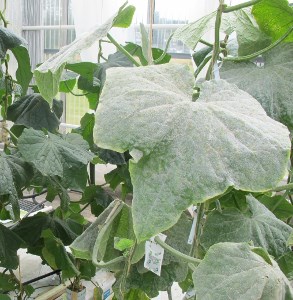Facts:
The most widely grown greenhouse crop in Sweden is cucumber. However, the organic production of cucumber is limited, mainly due to cucurbit powdery mildew disease (CPM), which causes severe yield losses. It is very difficult to control CPM without fungicides and control has been increasingly more difficult also in conventional cultivation due to development of fungicide resistance.
There are no biopesticides or biological control agents available in Sweden against CPM. Only two fungicides are currently registered for use against CPM in conventional production in Sweden. However, fungicide resistance has been reported in CPM populations and conventional growers are currently left to depend on only one fungicide and cultural practices as control measures against CPM. Organic growers rely on climate control, partially resistant cultivars, proper hygiene and sanitation measures only. Therefore, there is a great need for the development of alternative methods for the control of CPM both for organic and conventional cucumber production.
